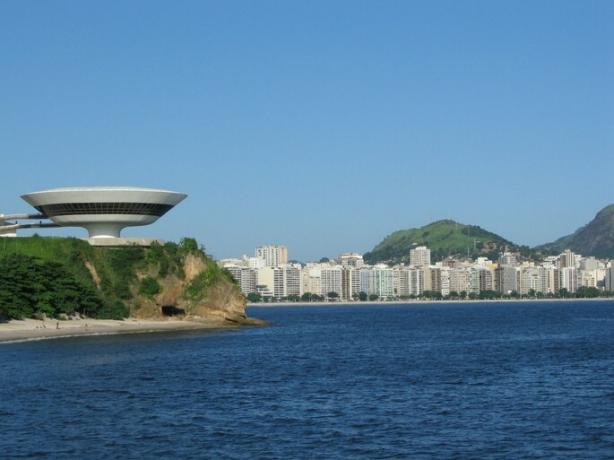Landscape is everything we can see from a place.
In other words, the landscape is everything that the eye can see.
The landscape is always changing either by human action or by natural action.
In a landscape, we find natural elements, which are characteristic of nature and cultural elements, which were made by human beings.
Therefore, landscapes are classified into two types: natural landscape and cultural (or humanized) landscape.
Natural landscape
The natural landscape is one that has been created by nature and has not been altered by human action.
It can be a forest, desert, sea, mountains, rivers, etc. As long as they have not been transformed by human action.
Look at the image below:

In the image above we can see the river, the white sand beach and the vegetation that are natural elements.
As we don't see anything that was created by human beings, such as houses or plantations, we can say that this is a natural landscape.
cultural landscape
In the cultural or humanized landscape, the human being intervened and placed elements of his culture. Therefore, the cultural landscape is the result of human action in the natural environment.
As examples, we can mention indigenous villages, cities, plantations, etc.
See the image below:

This is an example where we can contemplate the sea, the hills and the vegetation, which are considered as natural landscape, but also the buildings and trees planted on the edge, which are elements cultural.
So, this is a cultural landscape, as we identified elements of western life in this space.
Natural and cultural elements
In a landscape we can find two types of elements: natural and cultural (also called artificial).
natural elements
Natural elements are those produced by nature such as relief, native vegetation, soil, geographic features, etc.
cultural elements
In turn, cultural elements are those made by humans, such as houses, tools, transport, crops, animal husbandry, etc.
It is important to remember that cultural elements express the characteristics of a society. Therefore, not all houses will be the same in all parts of the world.
Look at the image below and try to identify natural and cultural elements contained therein:

In this image we see several trees that are the natural element of the landscape. However, we see the typical Japanese bridge painted in red that shows us the action of human beings on the landscape.
Therefore, we say that this is a cultural or humanized landscape.
Now it is your turn. When you leave the house or look out the window, what kind of elements do you see in the landscape? Natural? Cultural?
We have more texts for you:
- What is landscape?
- Natural landscape
- cultural landscape
- Natural and humanized landscape



